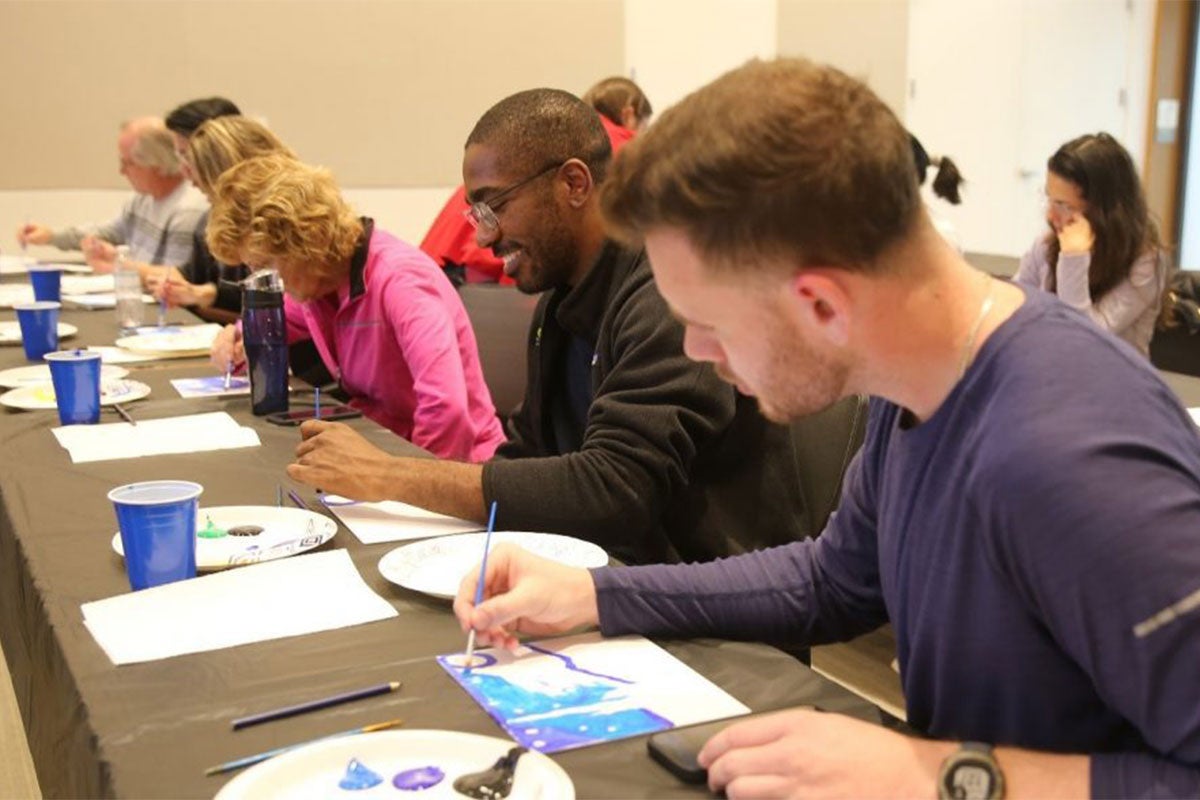As UCF medical students gazed at St. Johns Sunset, painted by an artist with a debilitating muscle condition, they saw the power of art in healing and how they can care for patients as people, rather than a list of symptoms.
The painting was part of the College of Medicine’s new fourth-year Arts in Medicine elective to help future doctors get acquainted with music, drama, art, and creative writing and their potential for use in patient care.
“In medicine, we can sometimes focus so much on science and treating the individual symptoms that we forget to treat the person as a whole,” says College of Medicine librarian Natasha Williams, who helped create the course that includes tours of art museums and hands-on artistic experiences. “We want to remind these doctors that their patients are people with interests, and feelings and passions first to help them build that deeper connection.”
The four-week course was made possible through a grant from the Pabst Steinmetz Foundation, which is dedicated to inspiring and building community through innovation in arts and education.
Medicine is increasingly understanding the spiritual and emotional side of healing and arts-in-medicine advocates stress the importance of artistic expression both for patients dealing with disease and the providers who care for them.
Fourth-year medical student Lake Lindo, who is active in UCF’s Arts in Medicine student organization, saw the power of art and connection when he held painting workshops with seniors who had little access to outside visitors during the pandemic.
“I have always been into art and looking for ways to combine arts and medicine, and this course lets me explore ways to do that,” he said of the elective.
During a recent class, students toured the Rollins Museum of Art, and discussed with guides their impressions of the art and what it may have meant to the artists who created it.
“This course and the art I saw today allow me to explore the artistic side of medicine and understand the patients as people more” says fourth-year student Bowen Ding. “It reminds me that people express themselves in different ways and the importance of patients’ comfort during the healing process.”
Caridad Hernandez, chair of Medical Education, is an internal medicine specialist, said the elective helps students develop the softer skills of patient care.
“There is an art to medicine. While there is the biological part where we focus on curing and treating disease, a lot of what we do is also alleviating suffering, and I think that is where the art comes in,” she says. “Art is a way to alleviate suffering and nurture their soul, particularly when they’re going through a difficult time in their life.”
Hernandez says these tools are not only there to help patients, but physicians themselves.
“Medicine and healthcare are very demanding, regardless of the health profession. It demands a lot of you and is emotional work. We are teaching students healthy ways to replenish their stores and work on their own emotional and mental wellbeing,” she said.
This class joins other fourth-year electives, Culinary Medicine and Narrative Medicine, which focus on more non-traditional outlooks toward medicine and ways to create better outcomes for patients.
According to Williams, this course would not be possible without Central Florida Community Arts, a local organization dedicated to building community through the arts that provided the instructors and helped organize many of the student experiences.
Kaileigh Anne Tayek, director of Central Florida Community Arts School of Arts & Health and an instructor for the course, is proud to see this class come to life.
“This elective is a culmination of nearly three years of planning and advocating for the field of arts in medicine,” she says. “The hope is that they will be able to share what they have learned and create a ripple effect using the arts to create meaningful doctor-patient relationships wherever they go next.”




